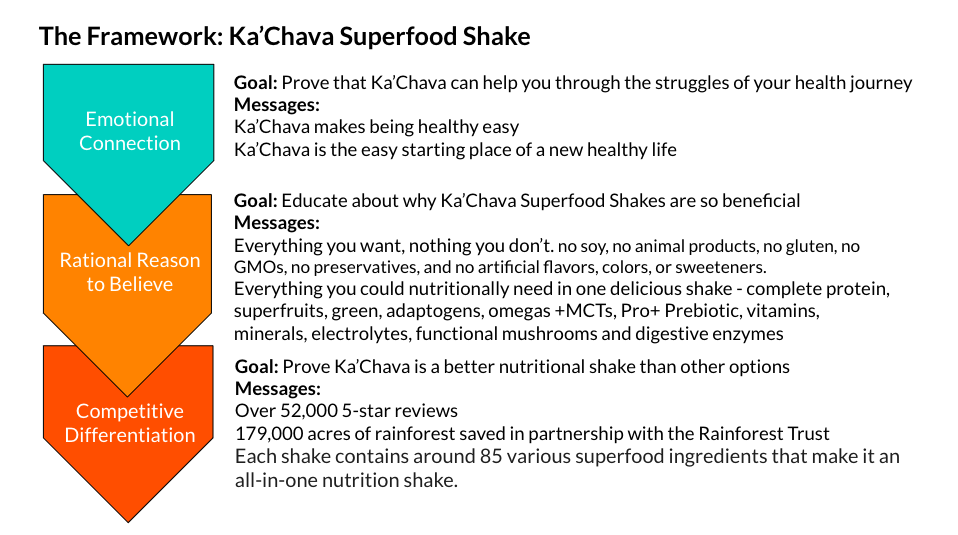A 3-Step Framework to create Breakthrough Sequential Messaging Campaigns
During my time as a strategist at Commonwealth // McCann, I developed strategy for dozens of campaigns for our Chevrolet client. From launching multiple Corvette performance cars to the continuous stream of truck advertising that powers General Motors' bottom line, we worked on different types of campaigns which allowed us to continue learning, evolving (and having fun) with how we developed and launched the creative.
Through my exploration of bringing the Chevrolet brand to life in different ways, we created an approach that unlocked the full potential of digital messaging for Chevrolet.
This approach led to highly effective digital messaging that translated across all platforms, consistently delivering benchmark-setting results in digital advertising and email marketing campaigns - allowing it to be tailored to diverse audience segments. The effectiveness we saw was no surprise. Sequential messaging has a history of performing above benchmark for other marketers as well - a study by Facebook showed sequential messaging led to an 87% increase in people visiting a brand’s landing page and a 56% increase in subscription rates.
While this approach can be consistently applied, its executional outcomes are only limited by targeting capabilities and budget resources that impact the scale of creative development and media deployment. Multiple creative units should be deployed and retargeted in a sequence to maximize effect and “tell a story” about what your business is offering and why a consumer should care. This makes it difficult for a potential customer to see the value in choosing another brand while making your offering impossible to ignore. It is crucial that these ad units are delivered as one campaign to maximize impact and deliver results; individual, sporadic messages will have far less impact. And ideally these campaigns are contextually targeted, reaching potential customers as they are seeking out information that will shape their decision making process.
The Basic Approach to Creating Breakthrough Sequential Campaigns
Audience Insight: Understand your key audience and what drives them to consider you and your competitors.
Business or Brand Objective: Define what your advertising needs to achieve to meet your business goals.
Step 1: Emotional Connect: We Get What Motivates You
Imperative: Prove to your audience that you fully understand their passions and motivations - building an emotional connection.
Step 2: We Can Help You: Rational Reason to Believe
Imperative: Show your audience that your product or service fits their needs perfectly - creating a rational connection.
Step 3: We Are The Best For You: Competitive Differentiation
Imperative: Demonstrate that your product or service is superior to all competitors -
reaffirming that your product is the very best product for them.
The Basic Framework
Example Frameworks
Below are three examples of this framework for reference and that’s it - just a reference.
I had fun looking into these brands I love and spending some time working through the framework.
Example 1: Mizuno JPX Tour irons
Source: Mizuno Golf
Audience Insight: Serious golfers want new clubs to improve their game but reject the technology often found in game improvement clubs. They want a traditional-looking club for the cool factor but refuse to compromise just for the sake of coolness.
Brand Objective:
Get serious golfers to switch to Mizuno JPX Tour irons by showcasing how the JPX Tour model of iron uses advanced technology to deliver high level performance and forgiveness without losing the look and feel of a true players irons which will help them love the game even more.
Example 2: Ka’Chava Superfood Shakes
Source: Ka’Chava
Audience Insight: Being healthy is hard, so you seek easy.
Brand Objective: Get customers who are seeking easy ways to be healthy online to see Ka’Chava Superfood as the best option for them by showing how achieving complete nutrition can be be easy and delicious.
Example: New Balance Iconic 990 line
Source: New Balance
Audience Insight: Sadly, some runners sacrifice foot pain for aesthetic.
Brand Objective: Get stylish runners with sore feet to see the New Balance 990 line of running shoes as a go-to option by showing how style and performance can be had at once.
Conclusion
In conclusion, this 3-step approach to sequential messaging offers a robust framework for crafting compelling and effective creative that is rooted in building a full understanding with your potential customers. By understanding your audience’s motivations, aligning with your business objectives, while following the steps of connection and messaging imperatives, your advertising will truly communicate meaning to those who see it. Whether you’re marketing golf clubs, nutrition shakes, or running shoes, this method ensures your message resonates deeply with your audience and sets your brand apart from the competition who is likely using a less comprehensive approach to digital messaging.
If you have any questions, comments or feedback about this framework, I would love to chat! Feel free to contact me at 586-738-1925 or samuelvancamp@gmail.com.
Cheers!






